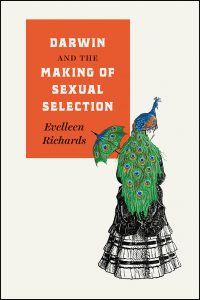Darwin and the Making of Sexual Selection

Elle Hunt at the Guardian takes on Evelleen Richards’s expansive account of Darwin’s theory of sexual selection, perhaps the biologist’s most misunderstood and least explored supposition:
Richards argues that, more than natural selection, Darwin’s theory of sexual selection was uniquely his own and, perhaps as a result, often misunderstood. His theorizing drew upon a wide range of influences, many of them deeply personal, including his grandfather Erasmus’s radical writings on evolution and his own relationship with his wife.
In, On Darwin and the Making of Sexual Selection, published last month by the University of Chicago Press, Richards explores this confluence of connections Darwin had to make and, just as crucially, the challenges he had to overcome in order to reach his conclusion.
Given the conventional understandings of beauty, gender and sexuality of the Victorian era, it is difficult to overstate how radical Darwin’s theory was at the time. It was the culmination of a lifetime of intellectual legwork – and yet he was constantly called upon to validate it until his death in April 1882.
Darwin struggled significantly to cement his theory, as evident not only from the wealth of unpublished personal correspondence and marginalia that Richards draws upon in her book, but the length of time it took him to publish it.
“It is an awful stretcher to believe that a peacock’s tail was thus formed, but believing it, I believe in the same principle somewhat modified applied to man,” Darwin wrote in 1864.
His theory was eventually published as The Descent of Man, and Selection in Relation to Sex in 1871, following about two years’ writing and “almost a lifetime” of theorizing. It was a “tremendous job”, Darwin wrote, and one that left him “dull as a duck, both male and female.”
***
To read the piece in full at the Guardian, click here.
To read more about Darwin and the Making of Sexual Selection, click here.